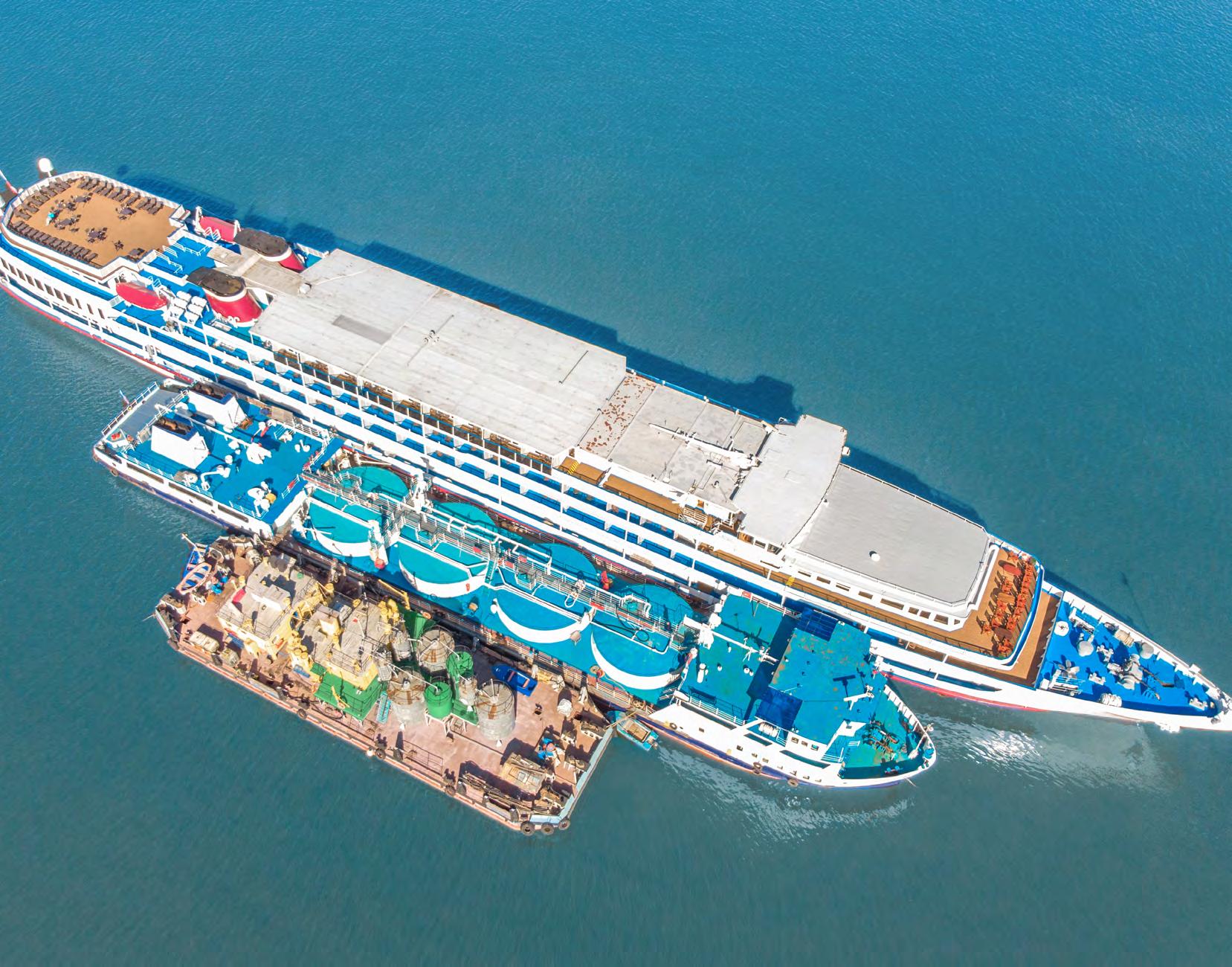
3 minute read
WELCOME
from CSI Summer 2022
by Maritime-AMC
TIME TO ADDRESS
BEHAVIOUR
Don Gregory Director, Exhaust Gas Cleaning Systems Association
The long debates on upgrading the ambitions in lowering greenhouse gas (GHG) emissions at the virtual session of MEPC 78 in early June this year really indicate that there are significant challenges to overcome to achieve consensus among member states. There were serious differences of opinions as to member state’s roles and contributions in reducing and eliminating fossil carbon emissions and other climate forcing emissions.
But it is not the member states that are the source of maritime GHG emissions. The decisions made by charterers, shipowners, banks, private equity and ship operators create the source of GHG emissions and can be the solution to accelerated reductions.
The methodologies to reduce GHG emissions has been discussed at the International Maritime Organization (IMO) for more than 25 years. The obvious method which was adopted was the so-called ship indexing, which groups ships into types, trades, etc to enable a comparison of relative GHG emissions performance. Two indexes were initially evolved. The Energy Efficiency Design Index (EEDI) and the Energy Efficiency Operational Index (EEOI). The indexes became the baseline with better performance required for new builds and over phased periods.
However, there is no real survey evidence that indexing has reduced GHG emissions. The indexes now appear to be an opportunity to “game” the system to achieve compliance without actually achieving the goals of reducing maritime industry GHG emissions.
In general, the maritime industry bases decisions on financial models and not indexes. To date, at IMO, a dollar value has never been placed on GHG emissions avoided.
Should IMO re-assess some of its approaches to rule making based upon an agreed and increasing value placed upon the environmental impact avoided and GHG emissions avoided?
The basic premise of any business investment is that “money today” is worth more than “money tomorrow”. This relates to the notion of the “time value” of money and the “discount factor” applied to any investment decision. One of the outcomes of the assessment is the notion of a “net present value” (NPV) of the investment decision. Instead of incentivising the building of ships with under-powered main propulsion the investment decisions should identify which investments derive the best NPV.
Just like the time value of money notion, there is real relevance in the time value of GHG emissions abatement. GHG emissions reduced today are massively more valuable than GHG emissions reduced tomorrow.
The science of climate change is not perfect, but it is clear that the so called tipping temperature is not fully evaluated and we are seeing what appear to be accelerating effects with the current concentrations of GHGs in the atmosphere. So, the reduction of 1 tonne of GHG today is likely to be immensely more valuable than reduction of 1 tonne of GHG tomorrow. In fact, the NPV notion for the removal of, say, two tonnes tomorrow may simply not be enough. The discount factor needed to be applied to achieve a positive NPV to climate change may be infinity. In other words, at some stage, it could be the zero GHG emissions will not be enough to halt accelerating climate change.
There are some existing opportunities for massive returns with very little financial investments, though. An example is just-in-time (JIT) arrivals. The wholesale application of JIT could overnight reduce the maritime GHG emissions by possibly more than 10%. Ships would be maximising their purpose, which is the transportation of goods while minimising their use as mobile storage.
The use of JIT has paid dividends in many other industries. It plays to the modern digital world of shared information and optimisation of resources. It reduces costs and creates higher standards of living. Why has it not been adopted in the maritime sector?
On the fundamental understanding that the maritime sector bases its actions on just two things – regulation and profit maximisation – IMO should look at moving, in some cases, away from regulations to drive the desired goals that we have noted don’t always work. It should instead begin to understand how to create systems that result in maritime industry profit maximisation and take a financial basis for achieving the goals.
Some will argue it is too difficult. However, it acknowledges and addresses the fundamental behaviour of the maritime industry. There is no reason why it should not be developed as the potential rewards are massive.










